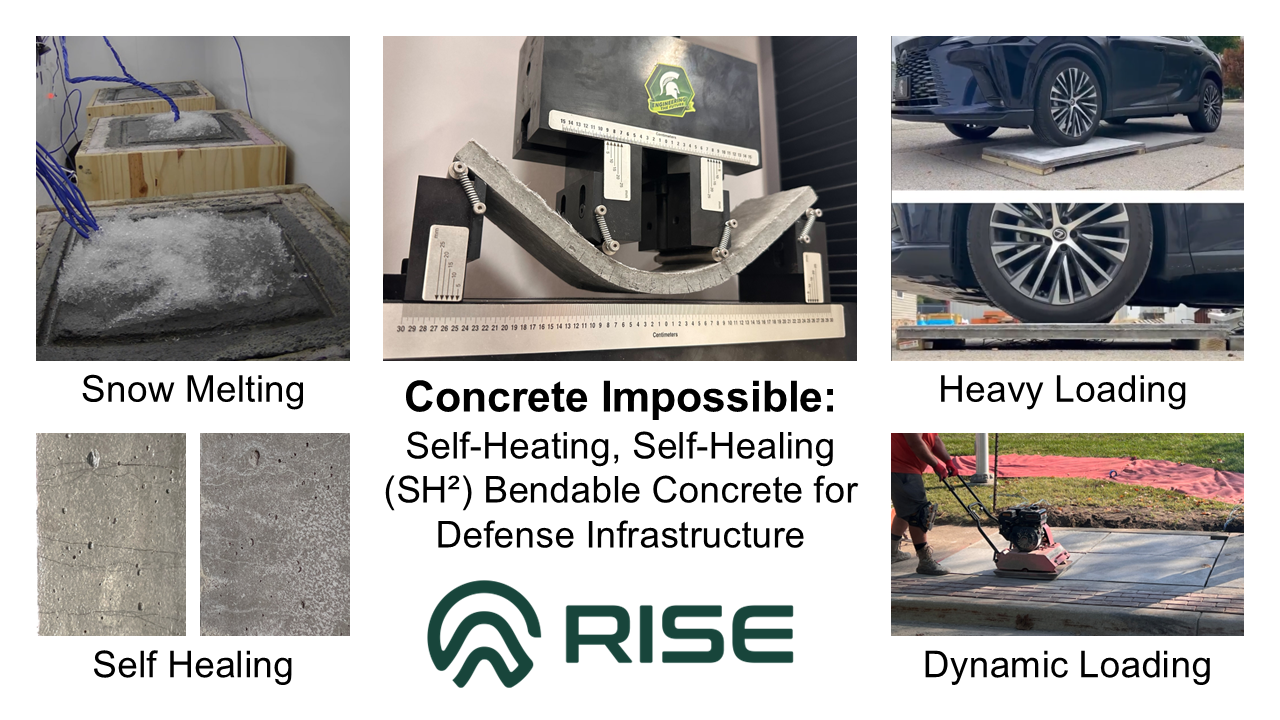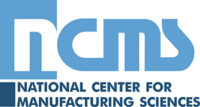Technology Title
Concrete Impossible: Self-Heating, Self-Healing (SH2) Bendable Concrete for Defense Infrastructure
Tech Focus Area
Coatings/Corrosion Prevention
Abstract
Problem Statement: DoW installations suffer accelerated pavement damage from freeze-thaw cycles and thermal stress. Conventional concrete is strong in compression but brittle under tension, causing cracks for moisture and chemical penetration. This corrodes rebar, creates potholes, and causes joint failure. Current winter maintenance depends on aggressive plowing and heavy deicing salts, causing corrosion and increasing cost and downtime. Critical operations suffer iced airway delays, vehicle access, and slippery sidewalks that create safety hazards. The result is higher maintenance costs, longer repair cycles, and reduced mission readiness.
Innovative Solution: We’ve developed SH² Bendable Concrete, a single material that combines self-heating capability, ultra-high ductility, and autonomous crack healing. Our concrete achieves over 500× the tensile ductility of conventional concrete. Under stress, it forms tight microcracks (<150 μm) that self-heal, blocking moisture and chloride intrusion. Unlike traditional concrete, our material captures heat from sunlight and releases it when temperatures drop near freezing. As a result, it can melt snow and ice and reduce the need for chemical salts. The material can be cast-in-place for new construction, thin overlay for rapid upgrades, or precast panels for quick repairs at high-priority locations like maritime structures, bridges, and runways. We have demonstrated a two-inch slab of this material withstands heavy compaction equipment without steel reinforcement.
Benefits to DoW
• Reduced maintenance: Faster ice melting cuts plowing frequency, deicer use, labor hours, and reactive repairs
• Improved readiness: Less downtime on flightlines, reduced skid hazards, better access at gates and critical entry points
• Lower lifecycle cost: Microcrack control and self-healing reduce corrosion and deterioration, extending pavement life and reducing repair frequency
• Broad applicability: USAF aprons and taxiways, Army motor pools and bridges, Navy/USMC pier aprons, USCG facilities, DLA distribution yards
Challenges: Following challenges must be addressed for adoption: First, developing performance-based specifications aligned with ACI/ASTM standards to support qualification and acceptance. Second, training producers, ready-mix suppliers, precast plants, and paving contractors, for QA/QC procedures, mix handling, and electrical safety. MIC demonstration support can accelerate these efforts and reduce adoption risk.
Technical Maturity: Lab testing confirms compressive strength exceeding 50 MPa, repeatable tensile strain-hardening behavior, controlled crack widths with self-healing, and faster snow/ice melting versus conventional concrete. A provisional patent has been filed. A field pilot project with multiple SH2 bendable concrete slabs installed with thermal and strain sensors to capture the response to the winter season. Following the pilot, we’ll conduct techno-economic analyses using field data to quantify ROI.
Graphic





